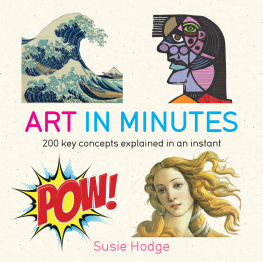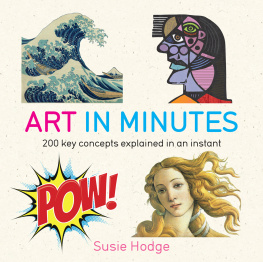First published in Great Britain in 2012 by
REMEMBER WHEN
an imprint of
Pen and Sword Books Ltd
47 Church Street
Barnsley
South Yorkshire S70 2AS
Copyright Susie Hodge, 2012
9781783469796
The right of Susie Hodge to be identified as the author of this work has been asserted by her in accordance with the Copyright, Designs and Patents Act 1988.
A CIP record for this book is available from the British Library.
All rights reserved. No part of this book may be reproduced or transmitted in any form or by any means, electronic or mechanical including photocopying, recording or by any information storage and retrieval system, without permission from the Publisher in writing.
Printed and bound in England by
CPI Group (UK) Ltd, Croydon, CR0 4YY
Typeset in Plantin by
CHIC GRAPHICS
Pen & Sword Books Ltd incorporates the imprints of
Pen & Sword Aviation, Pen & Sword Family History, Pen & Sword
Maritime, Pen & Sword Military, Pen & Sword Discovery, Wharncliffe
Local History, Wharncliffe True Crime, Wharncliffe Transport, Pen &
Sword Select, Pen & Sword Military Classics, Leo Cooper, Remember
When, The Praetorian Press, Seaforth Publishing and Frontline Publishing
For a complete list of Pen and Sword titles please contact
Pen and Sword Books Limited
47 Church Street, Barnsley, South Yorkshire, S70 2AS, England
E-mail: enquiries@pen-and-sword.co.uk
Website: www.pen-and-sword.co.uk
INTRODUCTION
Let us therefore brace ourselves to our duties and so bear ourselves that, if the British Empire and its Commonwealth last for a thousand years, men will still say, This was their finest hour. Winston Churchill, 18th June 1940
On the day that World War Two was declared, 3rd September 1939, the Evening Chronicle ran the headline: Play your part with calmness and courage. Ten months later, and one month after Winston Churchill had become Prime Minister, he continued to urge the British public to remain resolute and positive.
World War Two had a far greater effect on ordinary lives than World War One had ever had and the spirit of those who experienced it resulted in some remarkable achievements in the attempt to not only survive, but to sustain the morale of everyone else fighting for the same cause. This book investigates how the lives changed of some of the 90 per cent of the British population who remained civilians throughout World War Two; how they dealt with the difficulties and how, through a sense of solidarity, a spirit of defiance and innovative approaches to a wide variety of problems, they helped Britain to emerge victorious after almost six gruelling years.
Many of these unsung heroes have been interviewed or remembered in this book and many other primary and secondary sources have been investigated to compile an image of how a nation faced adversity together. From these personal perspectives, the book paints a picture of how, through enterprise and endeavour, many managed to improve exceptionally difficult lives by making do and mending; not just with fabrics and thread, but in almost every aspect of their existence; from growing food, to cooking with new ingredients, to salvaging, learning new skills, joining voluntary services or helping others directly, all of which had an impact on so many facets of life during the war.
Although being stalwart and brave at home while others fought abroad has been an aspect of conflicts for centuries, from the beginning World War Two brought unprecedented hardship to the British public. Evacuation, air raids and aerial bombardment, gas masks, ID cards, conscription, widespread shortages and rationing, blackouts, the Blitz, barrage balloons and anti-aircraft guns were just a few of the privations, horrors and worries that pervaded life in Britain that the public learned to live with. When mainland Europe fell to the Nazis in 1939, Britain was suddenly completely isolated. It had the effect of drawing the British people closer together, forging greater bonds, a firmer sense of involvement, refusal to yield and a more determined effort to defeat the enemy. Of course, there were exceptions. Some coped with the hardships in less than honest ways and long separations between couples prompted promiscuity in various quarters. There was a rise in crime and prostitution, while many suffered with psychological problems resulting from the stress. But on the whole, the entire population bolstered each other with incredible cheerfulness, courage and stamina.
Strange new world
From the moment war was declared, everyone dutifully carried their gas masks and identity cards. Streets were transformed by Air Raid Precautions (ARP) measures, including the sandbagging of buildings. In preparation for Nazi attacks, barrage balloons floated over towns, cities, industrial areas, ports and harbours while on the ground, anti-aircraft guns (known by most as ack-ack guns) could be heard practising regularly. Searchlight beams seeking out enemy aircraft in the sky were highly visible at night. Food was not immediately rationed, but from early on, there were shortages of butter and sugar. Petrol was rationed and some other consumer goods were also in short supply. In the wars first days, all places of entertainment were closed for fear of bombing, while embryonic television transmissions ceased and beaches were all sealed off with barbed wire in case of invasion by the enemy, for the extent of the war.
Being the home-makers and often bringing up children, women were the instigators and architects of most of the creativity and enterprise in and around the home. With huge resolve, while retaining the homemaking ideal that they had held before the war, housewives took up the enormous challenges that this particular war threw at them. Many also did war work, whether paid or voluntary and their resolve and refusal to let the situation overwhelm them played a large part in helping Britain win the war. At the start of the war the majority of women did not work outside the home but by 1942 400,000 British women were serving in the army, navy and air force. Women pilots flew planes from factories to RAF bases and when young men were called into the armed forces, millions of women worked in roles that had been traditionally the realms of men; in industry, building ships, aircraft, vehicles and arms, on buses and trains, in factories, hospitals and schools. Around 80,000 women joined the Womens Land Army and worked in the fields. Others remained in their homes, caring for children, looking after elderly relatives, taking part in voluntary organisations and generally helping in the war effort and bolstering morale. Most suddenly found themselves on their own in sole charge of their households, which could include as well as their own children, evacuees, billeted workers or relatives who had been bombed out of their homes. They quickly learned how to deal with the changes and to protect those in their care. As the war continued, they learned how to make nourishing meals from fewer ingredients and they became adept at growing, mending, repairing and preparing. Collectively, they faced the harsh conditions they found themselves in with courage and creativity. As the skills and time of civilians became essential to the war effort, the role of women in particular became invaluable. Housewives were urged to Keep the home fires burning and they were often described by politicians and journalists as the force behind the fighting line.








